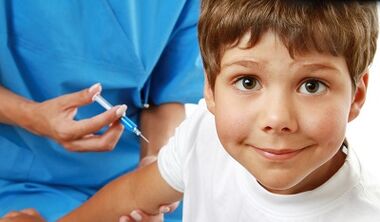The human papilloma virus or HPV is widespread all over the world, regardless of the region.According to statistics, every third person is infected by one of the strains of this virus.Anyone who cares about their health should know how human papillomavirus is transmitted and how dangerous it is.
Information on the virus
The disease causes the formation of benign growths on the skin and mucous membranes - these are papillomas, also known as warts and condition.There are more than one hundred strains of the virus, some of which represent a potential threat to health, as they cause the development of malignant neoplasms.
HPV occupies second place in terms of frequency of viral infections transmitted through sexual contacts.Once in the human body, the virus may not occur for a long time.Its activation occurs against the background of a decrease in immunity.It is after the recently transferred infectious diseases that patients notice the appearance of growths on the skin.

There is no effective method to combat the virus.A healthy body is able to independently defeat HPV.On average, the suppression of the virus activity has been serving for several months at several years, depending on immunity.
Many doubt that human papillomavirus is transmitted, considering the disease of the innate feature, but it is very simple to infect the HPV.
The virus is transmitted:
- sexually;
- Contact-Household;
- From mother to child.
The potentially dangerous strains are 16 and 18. According to statistics, 75% of cases of cervical cancer cause this viral infection.
Sex infection
Condilomas are transmitted by the person to sexually.At the same time, the risk of infection for women is higher than for men.This is due to the characteristics of the structure of the female genital organs.The vaginal mucosa is very sensitive to pathogenic agents.Due to the vast area of the walls, the probability of infection is very high, unlike men who have places less vulnerable only the penis and urethra.
Interestingly, you can be infected with a virus without penetration of the penis in the vagina.The human papilloma virus in women and men is contained in discharge and sperm, therefore, when the genitals are in contact, the risk of infection is high, even without sexual intercourse.
Sitety air conditioning are manifestations of one of the dangerous forms of the virus.These neoplasms affect the mucous membranes of the genitals, often develop on the border of the lips.The contact of the mucosa with an area affected by the condition can lead to infection.The HPV is directly contained in growth, so the infection is possible through kisses or with oral sex.
HPV infection in everyday life
The transmission of the virus is not sufficiently studied, but the possibility of infection has been demonstrated when using the hygiene articles of other people.A factor that increases the risk of infection is a decrease in immunity.The infection is possible when using towels, pillowcases or toothbrushes.
The contact with the skin of an infected person is harmless.The exception are the cases in which the papilloma is transmitted during the handshake.This HPV transmission is carried out under the influence of a series of factors:
- The skin with which a healthy person contacted is densely punctuated by papillomas and warts;
- There is a strong decrease in immunity;
- There is damage to the epidermis in a healthy person.
If a person is in contact with the vector of the virus, while the skin is damaged in the contact place, the transfer of HPV is possible.
The transfer of the mother's virus to child

The newborn is infected by HPV unnaturally and through the passage through the birth channel.This is due to the fact that during the delivery numerous microsya of the walls of the vagina occur, due to which the mucous membranes of the child are in contact with the virus.
The risk of intrauterine fetus infection during pregnancy is low.The virus can only be transmitted if it is in the active phase.With the Caesarean section, HPV infection is unlikely.
Risk factors
The sexual transmission of the virus is a serious problem that few people think.Despite the apparent safety of the disease, some HPV strains are potentially dangerous for people.As a rule, the infection occurs at the beginning of sexual activity.
The virus incubation period is large.Often, immunity suppresses the HPV independently, consequently, a person does not even suspect to be infected.The active phase of the virus is the period of formation of growths on the skin and mucous membranes.
The risk group is all people who do not carefully monitor their health.The reason for the activation of the virus is a weakening of the immune defense.
You can see the appearance of the papilloma:
- After the transmitted viral and infectious diseases;
- for systemic diseases, for example, with diabetes;
- on the background of an imbalance of hormones;
- After a long antibacterial therapy course.
The growths appear on any part of the body.Condilomas are formed on the mucous membranes, mainly on the genitals.
The formation of papillomas and warts on the arms and legs can be due to damage to the skin and a fall of local immunity.This is noted against the background of the increase in the sweating of the feet and the wear of the shoes that are too tight.Hands often appear after contact with domestic chemicals.
Diagnosis of dangerous strains of the virus

The formation of a condoms in the inguinal area is an opportunity to see a doctor.The type of virus is determined by the blood analysis, urine or strips from the vaginal mucosa.In addition, the doctor may recommend the removal of condition with further histological analysis of growth cells.This examination is mandatory in women when the condition is formed in the vagina and cervix.
Preventing the development of cervical cancer allows timely diagnosis of a carcinogenic type of viruses.At the beginning of the pathological process of cell degeneration in malignant and timely removal of the hearth and the corresponding drug therapy allows you to get rid of a dangerous disease.All women are recommended to be examined every year in the presence of type 16 and 18 HPVs.
The only effective way to avoid infection is vaccination.Vaccination is placed for girls aged 7 and 10 years.If necessary, the vaccination is carried out in old age, but only if the girl had no sex experience.
How to get rid of the HPV?
Drug therapy for HPV aims to reduce virus activity.There are no drugs that destroy this infection.
HPV therapy includes:
- antiviral treatment;
- strengthen immunity;
- Removal of the growths.
The main part of the treatment is antiviral therapy.Using drugs in ointments and tablets.Ointments are applied to each growth, allowing virus activity locally blocking the body's activity.Immunostimulants and vitamin preparations are used to strengthen the body's protective forces.
The removal of the growths is carried out only after the course of antiviral therapy.You can remove papillomas both in the doctor's office and at home alone.Professional removal methods are laser burns, cryodestrection or electrocoagulation.The removal of the radio waves of the Papillomas is also used.The advantages of these methods are innovation and security.After the procedure, they did not remain scars on the skin.
Alkaline blends are used at home, which are sold in pharmacies.Once the funds are applied to the papilloma body and to the burning fabrics.A few days later, the growth decreases in size and is dark and then disappears.The disadvantage of the method is the probability of formation of scars and pain during the treatment of the papilloma.
The acute worsening and the growths on the skin of the face cannot be removed by itself.Damage to neoplasms on the mucous membranes can lead to the spread of the virus.The arrest of the papillomas on the face is fraught with the formation of scars.
HPV prevention
Different rules will help not to be infected by the virus:
- Maintain immunity.Any colds must be treated in a timely manner.The treatment of influence and infectious diseases should always be integrated with the use of immunostimulants.
- Personal hygiene.Quite often, the infection occurs when using other people's hygiene objects.In addition to towels and cushions, it is advisable to avoid wearing other people's clothes and shoes, since when it rubs the skin, this can lead to the virus that enters the body.
- Sexual contact.Even the use of a condom does not guarantee one hundred percent protection against the HPV.The only way out is a permanent partner and loyalty.The virus is transmitted by a man to a woman, the reverse infection occurs less often.
If the growth on the skin interferes, it hurts or clings to the clothes, it must be removed.In most cases, HPV does not damage health and causes only aesthetic discomfort.Before removing the papilloma on the skin, it is recommended to undergo an exam to determine the type of viruses.
















